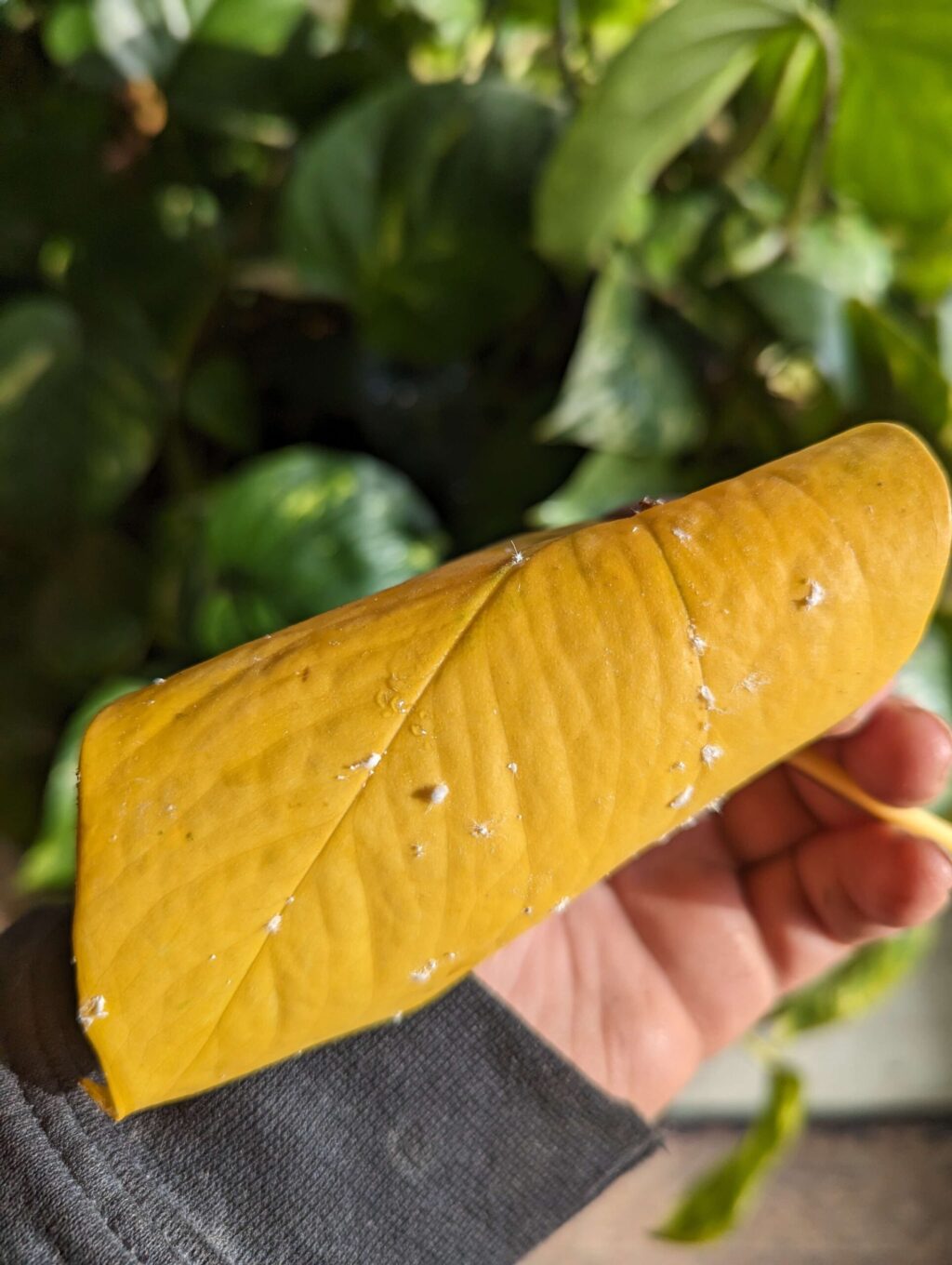Ask Anna – Mealybugs
Happy December, I hope everyone has a happy holiday! This month we are answering the question “What is this on my pathos plant?”
This looks to be Mealybugs. They cause damage by sucking the juice from their host plants, usually from new growth. The mealybug’s coating has a white cottony appearance, making it easy to identify when it appears on the stems and leaves of plants. In northern climates, they are mainly a problem with houseplants.
A light mealybug infestation is easy to get rid of, but heavy infestations can be more difficult. By checking your plants regularly you can catch it before it becomes a big infestation. If it’s a houseplant, it should be separated from other houseplants during treatments to prevent the infestation from spreading. On a heavier infestation, you’ll also see their waxy excretions almost sticky (known as honeydew), which encourages the growth of sooty mold fungus. Over time, mealybugs cause the leaves to yellow and eventually drop from the plant. Before doing any treatment, if you can spare the most infected areas, I would remove these first from the plant pinching any leaves back that might be heavily infected with mealy bug.
I’ve used three different methods to get rid of mealybugs in the past. The first is to wash them away. Use a steady stream of water in the kitchen sink, bathtub, or shower. This is best for light infestations, as some fragile plants do not tolerate this kind of vigorous treatment. The second way is to soak a cotton ball with isopropyl rubbing alcohol, which contains 70% alcohol. Do not use stronger rubbing alcohol, and test it on one leaf before you apply it to the whole plant to make sure the alcohol doesn’t burn it. Wipe the bugs off with the cotton ball, which should kill them instantly. The last method I’ve used is to make a batch of homemade garden pesticide. Combine 1 garlic bulb, 1 small onion, and 1 teaspoon of cayenne pepper in a food processor or blender and process into a paste. Mix into 1 quart of water and steep for 1 hour. Strain through a cheesecloth and add 1 tablespoon of liquid dish soap. Mix well. Spray the solution on the plant parts where mealybugs are present, including the underside of the leaves, and repeat this as needed if you detect more mealybugs. This homemade insect spray is also safe to use on vegetable plants in the garden!
If you would like me to answer one of your questions next month you can send your question to me at [email protected] attention Ask Anna.





